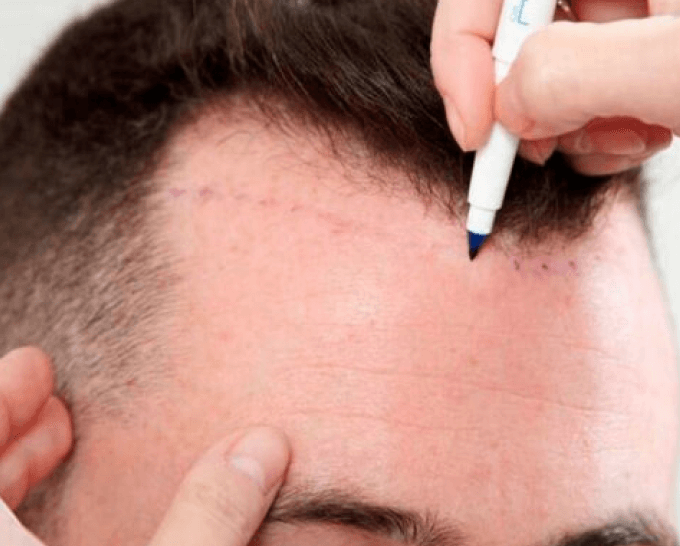Undergoing a Scarless Hair Transplant in Dubai, primarily through the Follicular Unit Extraction (FUE) technique, can be a life-changing decision for individuals facing hair loss. While the procedure itself is minimally invasive, understanding the recovery process is crucial to achieving optimal results. This guide outlines what to expect during recovery, offering tips for a smooth healing journey.
Understanding the FUE Procedure
Before diving into the recovery process, it's essential to understand how the FUE technique works. During an FUE hair transplant, individual hair follicles are harvested from the donor area, typically at the back of the scalp, and then implanted into the thinning or balding areas. Because this method does not involve the removal of a strip of scalp, patients experience minimal scarring and shorter recovery times compared to traditional methods like Follicular Unit Transplantation (FUT).
Immediate Post-Operative Care
1. Initial Hours After Surgery
- After the procedure, patients are typically monitored for a short time to ensure there are no immediate complications.
- Pain management may be addressed with prescribed medications. It’s essential to follow your surgeon's instructions regarding medication and any post-operative care guidelines.
2. Head Positioning
- For the first few days, keep your head elevated to minimize swelling. Sleeping with your head raised can help reduce inflammation and discomfort.
3. Avoid Touching the Scalp
- Refrain from touching, scratching, or picking at the transplanted area to allow the follicles to settle securely.
First Week of Recovery
1. Swelling and Discomfort
- Some swelling around the forehead and eyes may occur within the first few days, peaking around 2-3 days post-op. This typically subsides within a week.
- Mild discomfort can be expected, but it should be manageable with over-the-counter pain relievers or prescribed medications.
2. Cleaning the Scalp
- Your surgeon will provide instructions on how to gently wash your hair and scalp. Avoid vigorous scrubbing or using harsh hair products for at least a week.
- Use a mild, sulfate-free shampoo recommended by your doctor.
3. Avoiding Strenuous Activities
- Refrain from strenuous exercises or activities that cause sweating for at least a week to prevent irritation and promote healing.
Weeks Two to Four
1. Shedding Phase
- Around two to four weeks post-transplant, you may notice some shedding of the newly implanted hair follicles. This is a normal part of the hair growth cycle and is often referred to as "shock loss."
2. Continued Care
- Maintain a gentle hair care routine and follow the cleaning instructions provided by your surgeon. Continue to avoid direct sun exposure on the scalp and wear a hat when outdoors.
3. Gradual Return to Activities
- Gradually reintroduce light physical activities after the first week, but continue to avoid high-impact exercises until cleared by your surgeon.
Months One to Three
1. New Hair Growth
- Between one to three months post-procedure, the transplanted hair follicles will begin to grow. Initially, the hair may appear thin, but it will gradually thicken over time.
2. Follow-Up Appointments
- Attend any scheduled follow-up appointments with your surgeon to monitor progress and address any concerns.
3. Healthy Lifestyle
- Focus on maintaining a balanced diet rich in vitamins and minerals that support hair health, such as vitamins A, C, D, E, zinc, and omega-3 fatty acids.
Long-Term Recovery and Maintenance
1. Full Results
- Full results from a scarless hair transplant can take up to 12 months to become apparent. Patience is key during this period as the hair continues to grow and mature.
2. Ongoing Hair Care
- Continue to use gentle hair care products and avoid excessive heat styling or chemical treatments.
- Consider discussing additional treatments, such as platelet-rich plasma (PRP) therapy, with your surgeon to enhance hair growth.
3. Consultation for Concerns
- If you notice any unusual symptoms, such as excessive pain, prolonged swelling, or signs of infection, consult your surgeon immediately.
Conclusion
The recovery process after a scarless hair transplant is relatively straightforward, but it requires adherence to your surgeon's post-operative care guidelines for the best results. By following the outlined steps and maintaining a healthy lifestyle, you can support your hair's healing process and enjoy the transformation that a hair transplant can bring. As always, communicate openly with your healthcare provider to address any concerns and ensure a successful recovery.






Comments